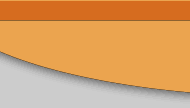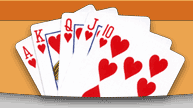Blackjack Strategy
Multiple-Deck Basic Strategy
For players who really want to make a difference in their casino
results, who want to maximize their chances to win while minimizing
their expected losses, there is little they can do that compares
with learning basic strategy in blackjack.
The average blackjack player spots the house an edge of about
2 to 2.5 percent, leaving a game that's a little better than
Caribbean
Stud, Let It Ride or pai-gow poker, but not as good a bet as
baccarat or the best bets in craps. But the player who takes
the time to
learn and practice basic strategy slashes the house edge in
a multiple-deck game to about half a percent, give or take
a
couple of tenths of
a percent depending on house rules.
That's an enormous difference, the difference between losing
an average of about $2 to $2.50 per $100 wagered or spotting
the house
only about 50 cents per $100. Anyone who plays blackjack
should learn basic strategy, a topic I like to revisit once
every
couple of years. As we move away from the strategies in poker-based
games we've already covered in this occasional series on
table-game strategies,
let's check out basic strategy for multiple-deck games. Single-deck
strategy is slightly different, so \we'll also look at strategy
differences for the one-deck game, along with a few moves
beyond basic.
Basic Strategy For Hard Totals
- Always stand on hard 17 to 21.
- Stand on hard 13 to 16 if the
dealer's face up card is 2, 3, 4, 5 or 6, but hit against 7
or higher.
- Stand on hard 12 if the dealer's up card is 4, 5 or
6, but hit against 2, 3, 7 or higher.
- Hit hard 13 to 16 if
the dealer's face up card is 7 or higher, but stand against
6 or lower.
- Hit hard 12 if the dealer's up card is 2 or 3, as
well as 7 or higher. Stand against 4, 5 or 6.
- Double down on
11 if the dealer's up card is anything but an Ace. Just hit
against an Ace.
- Double down on 10 if the dealer's up card is
anything but an Ace or a 10-value card. Just hit against an
Ace or 10-value.
- Double down on 9 if the dealer's up card is 3, 4, 5 or 6.
Otherwise, hit.
- Hit totals of 8 or less.
That's easy enough, right? Things get a little more complicated
with "soft" hands--hands in which an Ace
is being counted as 11. These hands can't be busted
with a one-card hit, since we
can count the Ace as 1 instead. Basic Strategy For Soft Totals
- Always stand on soft 19, 20 or 21.
- With soft 18,
hit if the dealer's face up card is a 9, 10-value
card or Ace. Stand if the dealer shows a 2, 7
or 8. If your soft 18 consists of two cards, double down if the dealer shows
a 4,
5 or 6. If your soft 18 is three or more cards,
stand when the
dealer shows a 4, 5 or 6.
- If a soft 13 through
17 consists of three or more cards, always hit, regardless
of the dealer's up card.
- With a soft 17 consisting
of two cards, hit if the dealer shows a 2, or a 7
or higher. Double down if the dealer
shows a 3, 4, 5 or 6.
- With a soft 15 or 16 consisting of two cards, hit
if the dealer shows a 2, 3 or a 7 or higher. Double
down if
the dealer shows a 4, 5 or 6.
- With a soft 13 or 14 consisting of two cards, hit
if the dealer shows a 2, 3, 4 or a 7 or higher.
Double down
if the dealer shows a 5 or 6.
What about soft 12? That's a pair of Aces, and that
belongs to the next area of basic strategy, splitting
pairs.
When deciding whether to split pairs, we need to
keep in mind
whether the
house
rules permit us to double down after splitting.
If we have the option of doubling, we split more pairs
than
if we
don't.
We always split when we have pairs or Aces or 8s, and
never split 5s or 10s. With anything else, it depends
on the
dealer's hand
and house rules.
Basic Strategy For Splitting Pairs
- Pair of 2s or pair of 3s: If we can double after splits,
we split 2s or 3s whenever the dealer's up card is a 2 through
7. If doubling after splits is not permitted, we skip splitting against
2s or
3s. Then we split only when the dealer
shows 4, 5, 6 or 7.
- Pair of 4s: If we can't double after splitting
the pair, it's not worth splitting 4s. But if doubling after
splits is permitted, we have an opportunity to maximize profits when the dealer
shows
a 5 or 6. That's when we split.
- Pair
of 5s: Never split.
- Pair of 6s: Split against 3, 4, 5 or 6
in any game, and split against 2 if permitted to double after
splits.
- Pair of 7s: Split whenever the dealer shows a 2 through
7. Splitting against a 7 sometimes is a stumbling
block for players who fear creating two losing hands, but we're far better
off starting
7
against a 7 than 14 against a 7.
- Pair of 8s: Always split.
- Pair of 9s: This is the trickiest
pair-splitting hand. Split when the dealer shows 2 through
6, as well as when the dealer's up card is 8 or 9. Stand when
the dealer shows
a 7, 10 or Ace.
- Pair of 10s: Never split.
- Pair of Aces: Always split.
Single-Deck Basic Strategy
Those whose casino memories stretch back far enough may recall
a time when the standard "Las Vegas Strip" blackjack
game was dealt from a single deck of cards, with the dealer
standing on all 17s.
That started to change in the 1960s as operators grew ever
more fearful of card counters, and today most casino blackjack
games
use multiple decks.
That affects all players, not just card counters. That once-standard
Strip game is just about a dead heat for basic strategy players,
with a 0.001 percent edge to the player. But going from one
deck to two gives the house a 0.34 percent edge, and the
house edge
increases with every deck added, to 0.55 percent with six
decks and 0.57 percent with eight decks.
The house can give back a little of the edge with positive
rules, or take even more with negative ones, but given
otherwise equal
rules, the house edge is lower with fewer decks.
Why? Because the effect on the composition of the remaining
deck of removing cards through play is greatest when a
single deck
is used.
Let's say we're dealt a 5 and a 6, and the dealer's up
card is an Ace. In a single-deck game, 16 of the other
49 cards
in the
deck are 10-value cards, giving us a 32.7 percent chance
of drawing a 10 value on our next card for a 21. But
in a six-deck
game,
where 96 of the remaining 309 cards are 10 values, our
chances of drawing
a 10 value are only 31.1 percent.
That makes it a more favorable play to double down on
11 vs. a dealer's Ace in a single-deck game than when
multiple
decks
are
used. And that forces a change in basic strategy: In
multiple-deck games, we double down on 11 when the
dealer shows anything
but an Ace. In single-deck games, we double against
the Ace, too.
To get the most out of the single-deck game, we make
a number of little strategy changes from basic strategy
for
multiple-deck
games:
Single-Deck Variations For Hard Totals
- Double down on 11 against all dealer up cards, instead
of just doubling against 2 through 10.
- Double down on 9 against
2 through 6 instead of 3 through 6.
- Double down on 8 against
5 or 6 instead of just hitting against all up cards.
Single-deck variations for soft totals
- With Ace-8, double down
against 6 instead of just standing against all up cards.
- With Ace-7, stand against a dealer's Ace if the dealer stands
on all 17s. If the dealer hits soft 17,
or in multiple-deck games, hit soft 18 vs. an Ace.
- With Ace-6, double down
against 2 through 6, instead of just doubling against 3 through
6 as we do in multiple-deck
games.
- With Ace-3 or Ace-2, double down against 4, 5 or 6 instead
of just against 5 and 6, as in the multiple-deck
game.
Single-Deck Variations For Splitting Pairs
- With 2-2, if doubling after splits is permitted, split
against 2 through 7 regardless of the number of decks. If not,
split against
3 through 7 in single-deck blackjack,
but only 4 through 7 in multiple-deck.
- With 3-3, if doubling
after splits is permitted, split against 2 through 8 in single-deck,
2-7 in multiple-deck.
If doubling after splits is not allowed, just split against 4-7 regardless
of the
number of decks.
- With 4-4, never split
if doubling after splits is not permitted. If it is, split
against 4, 5, or 6
in single-deck blackjack, but just 5 or 6 in multiple-deck.
- With 6-6, if doubling
after splits is permitted, split against 2 through 7 in single-deck
blackjack,
but just 2-6 with multiple decks. If you can't double after splits, split
against 2 through
6 with one deck, 3 through 6 with
multiple decks.
- With 7-7, if doubling after splits is permitted, split against
2 through 8 with one deck, 2
through 7 with multiple decks. Split against 2 through 7 in all
games if doubling
after splits is not
permitted. Also, hit 7-7 against
a 10 in multiple-deck games, but stand in single-deck blackjack.
|









